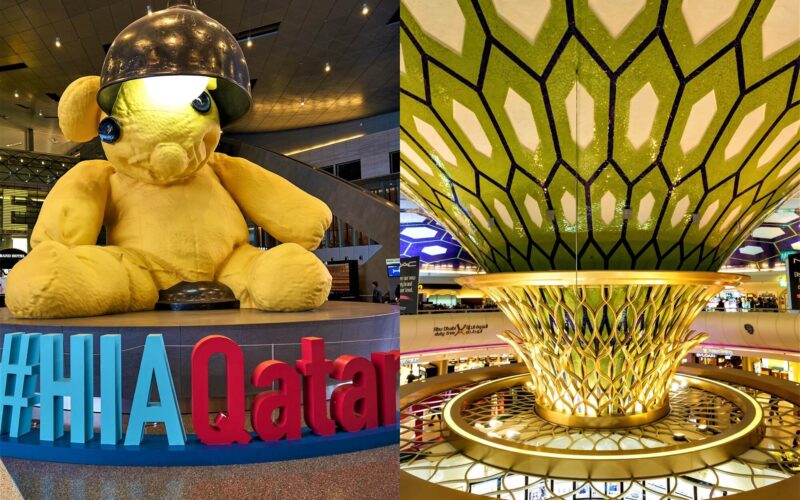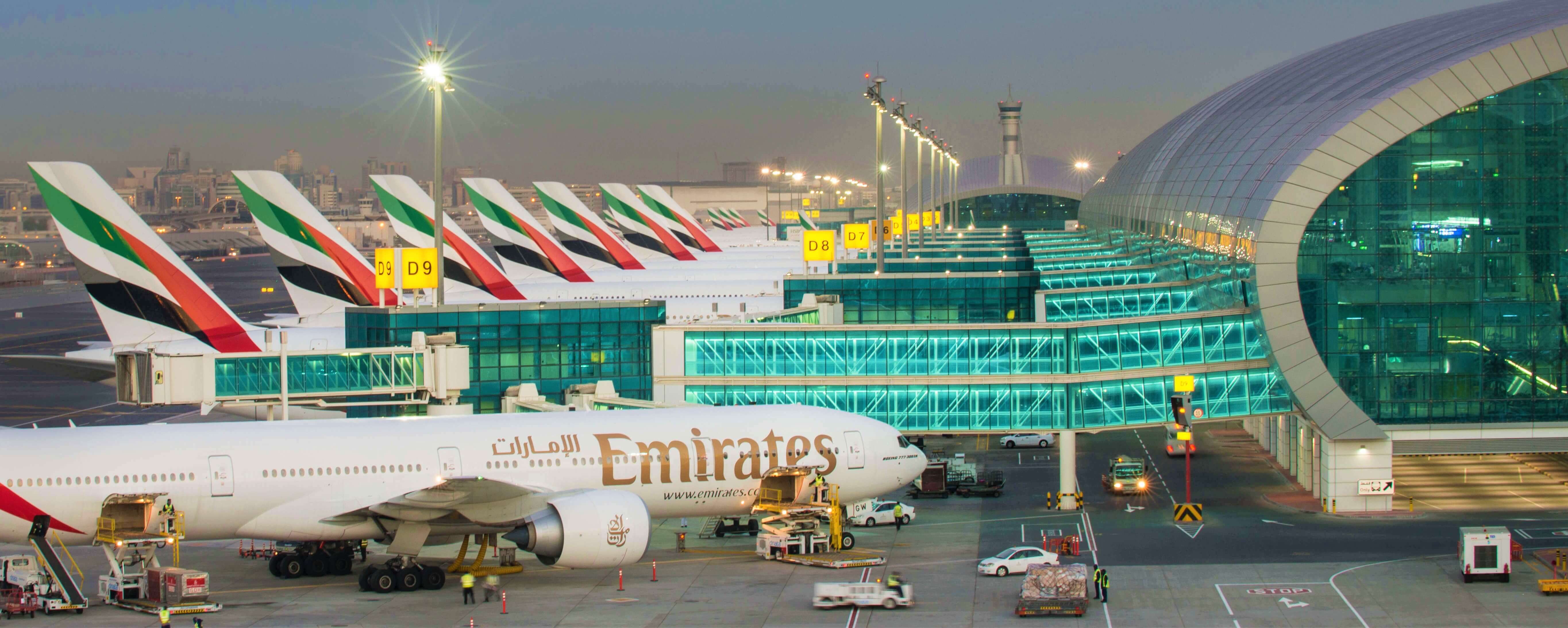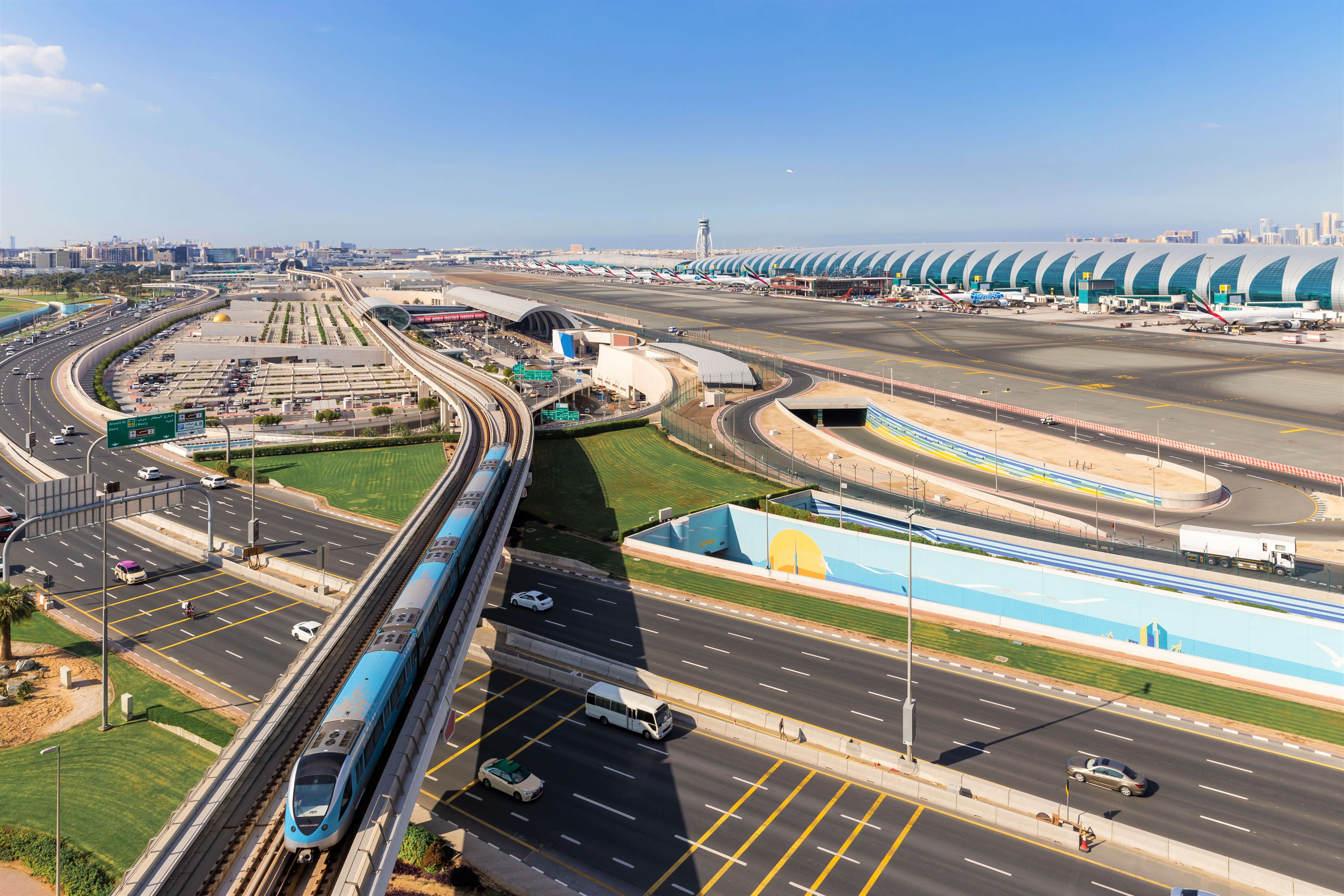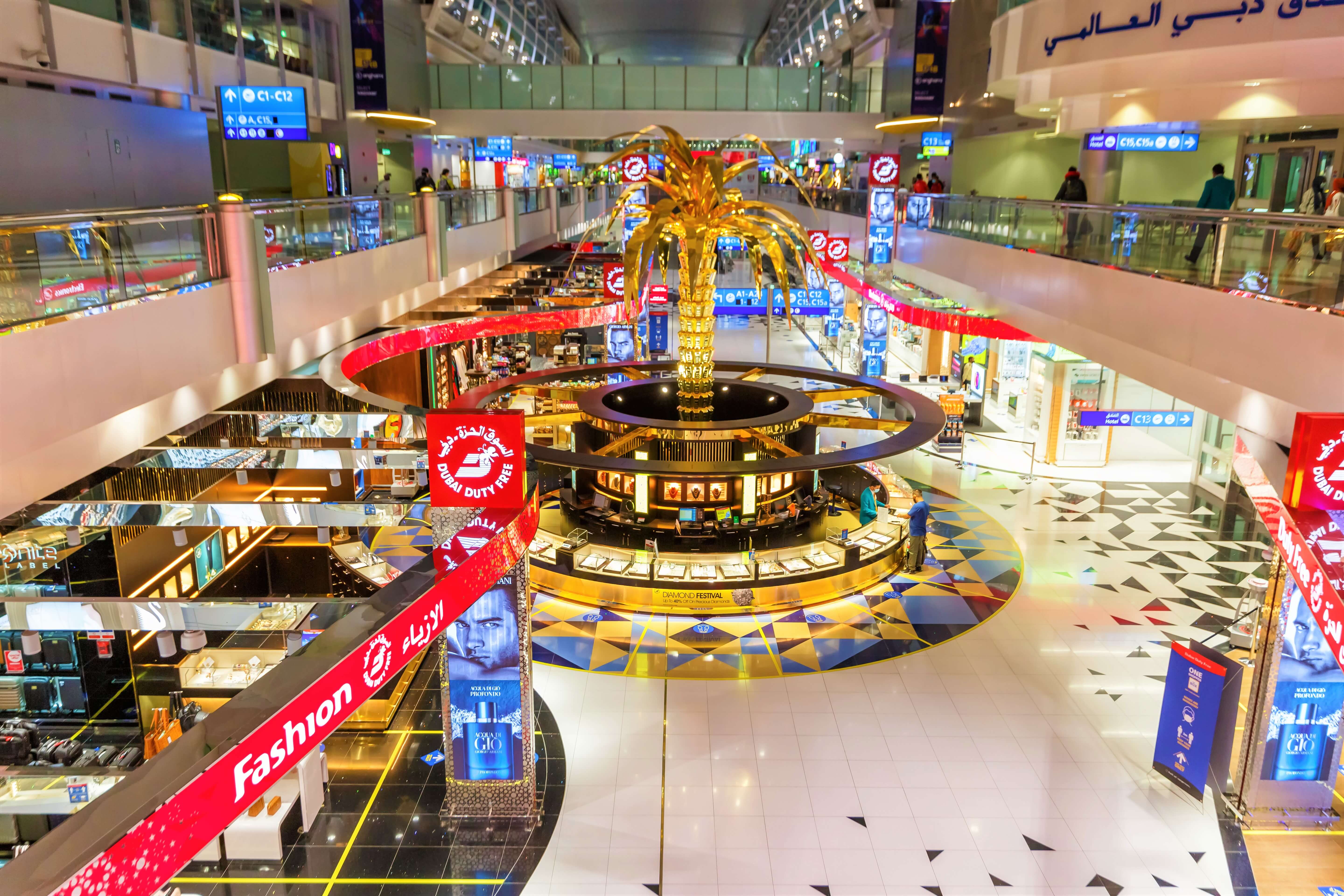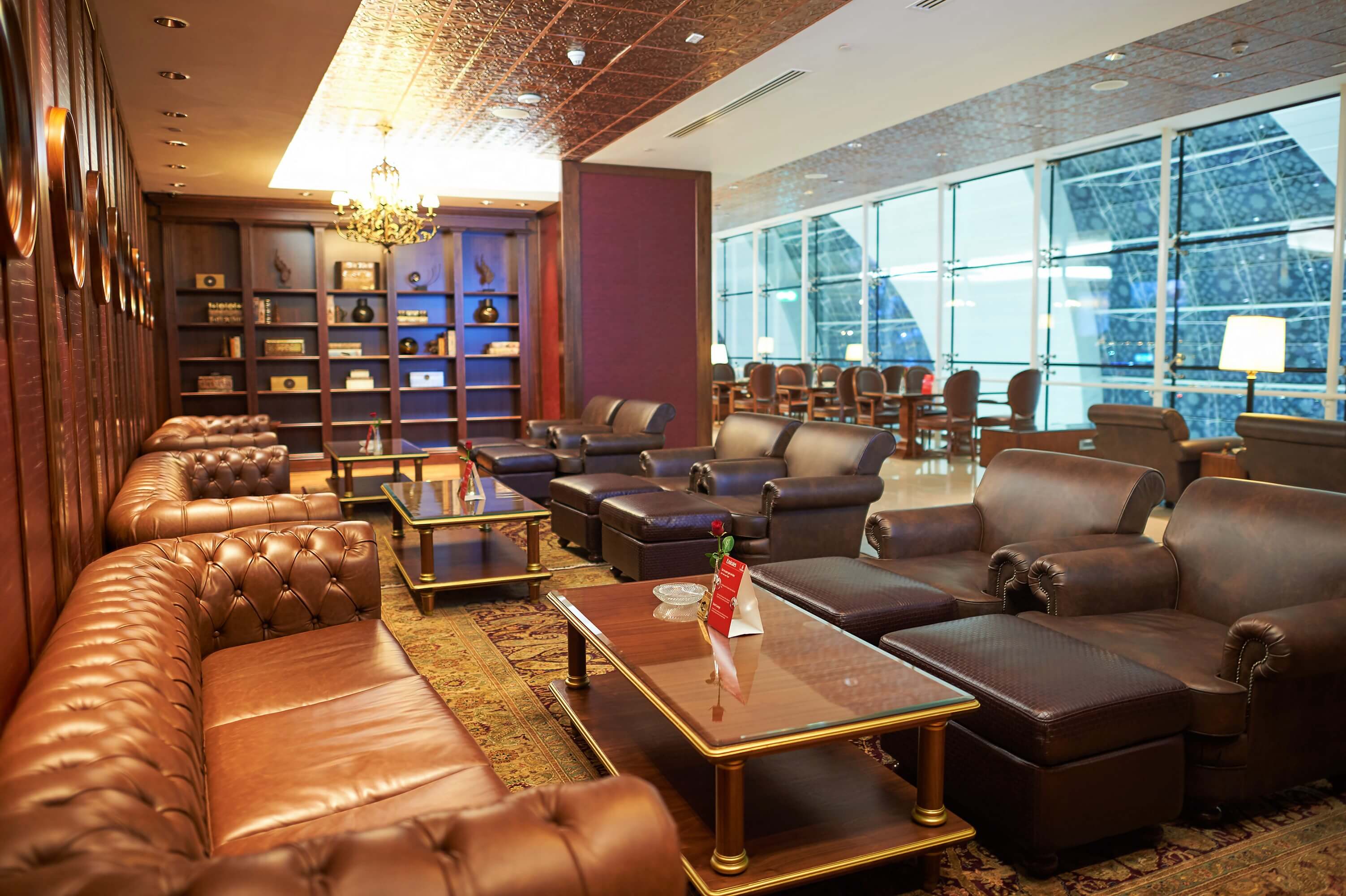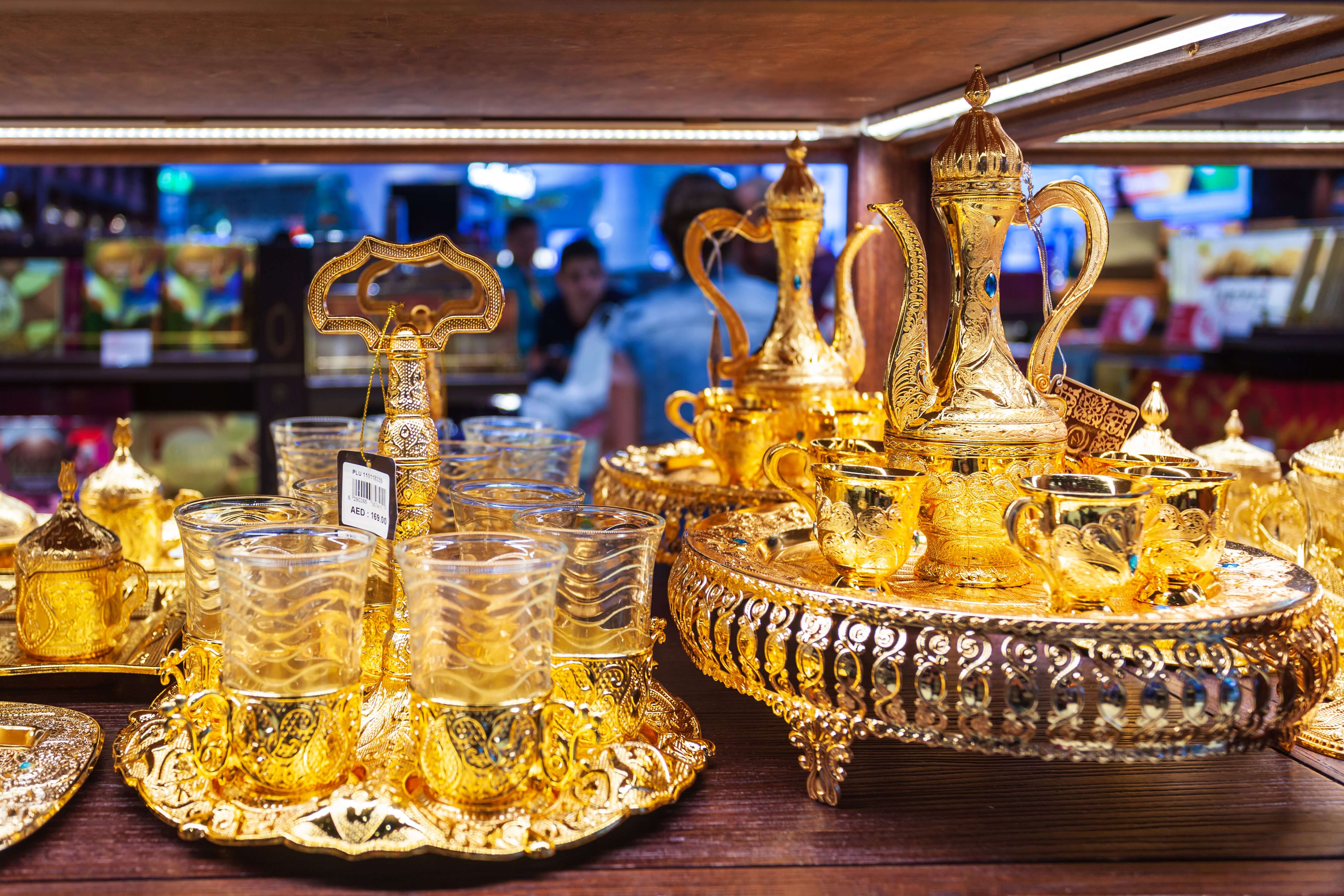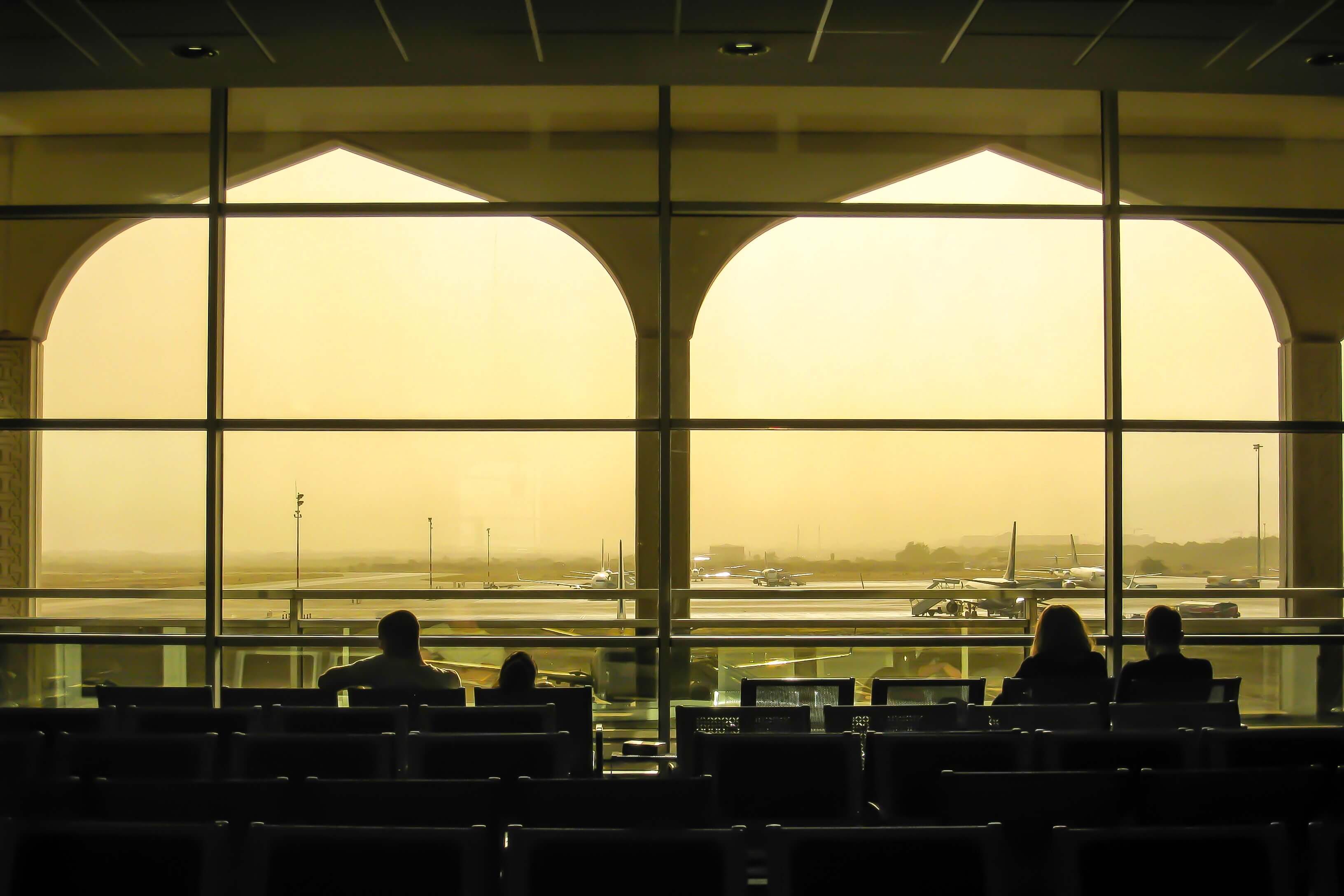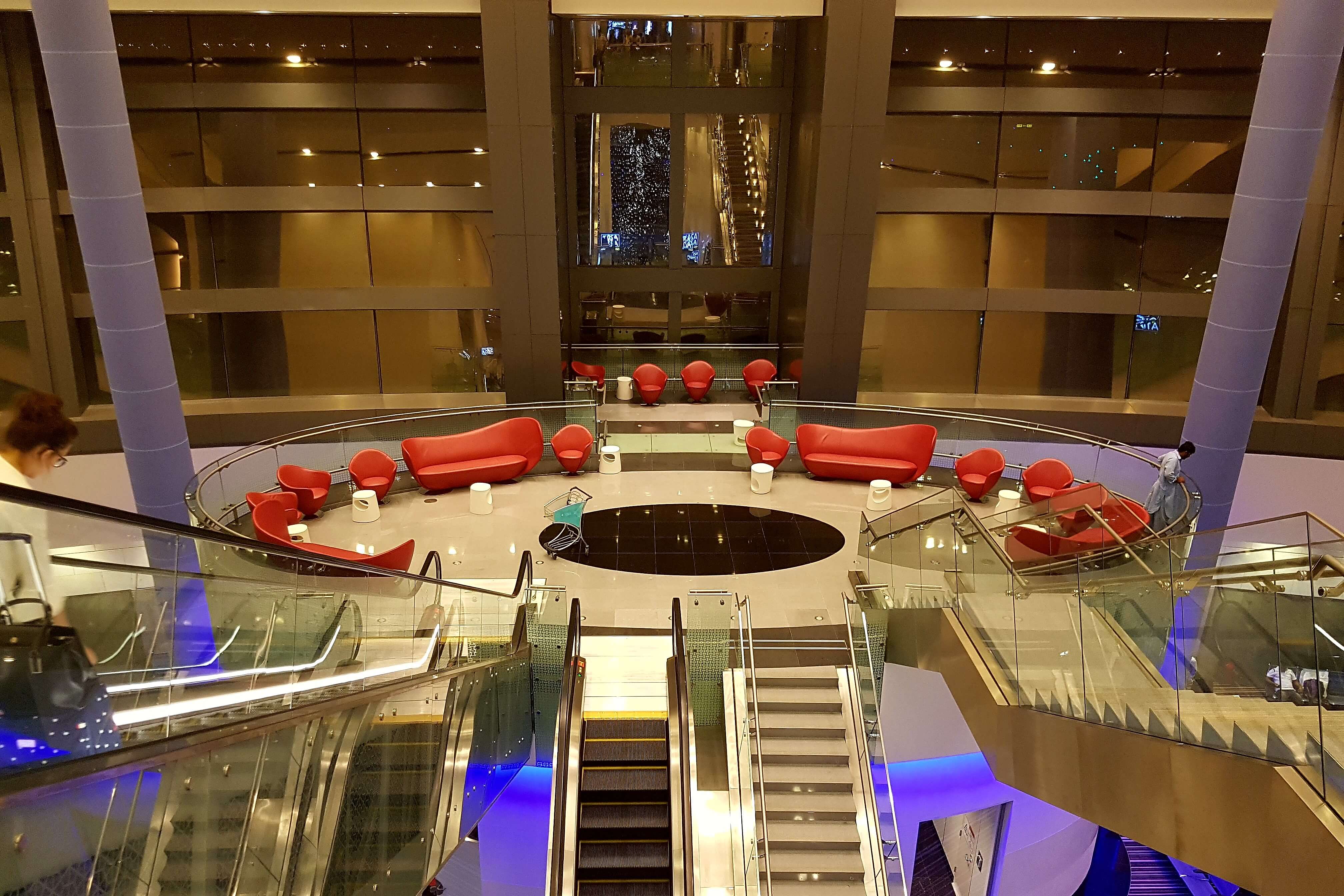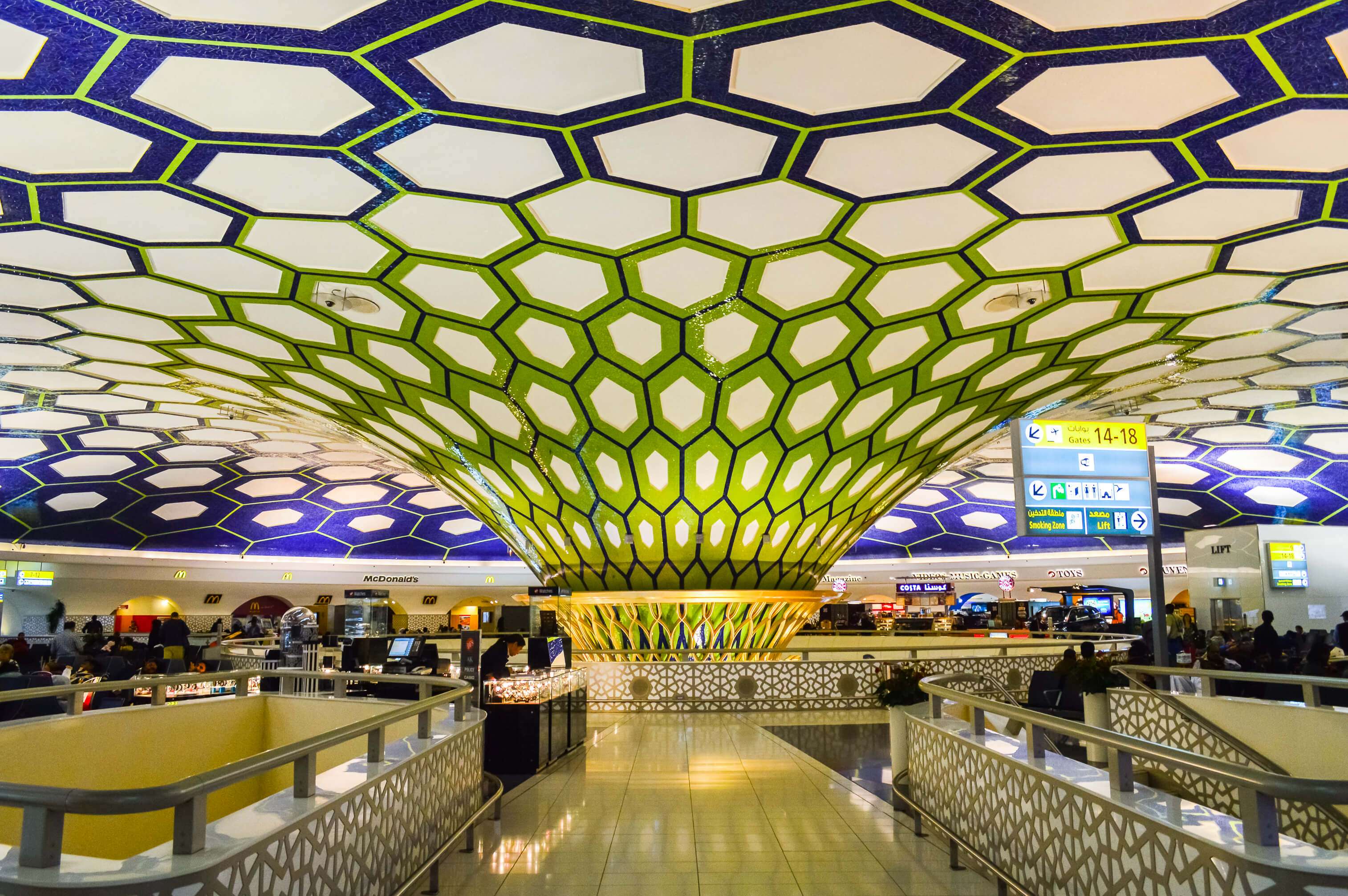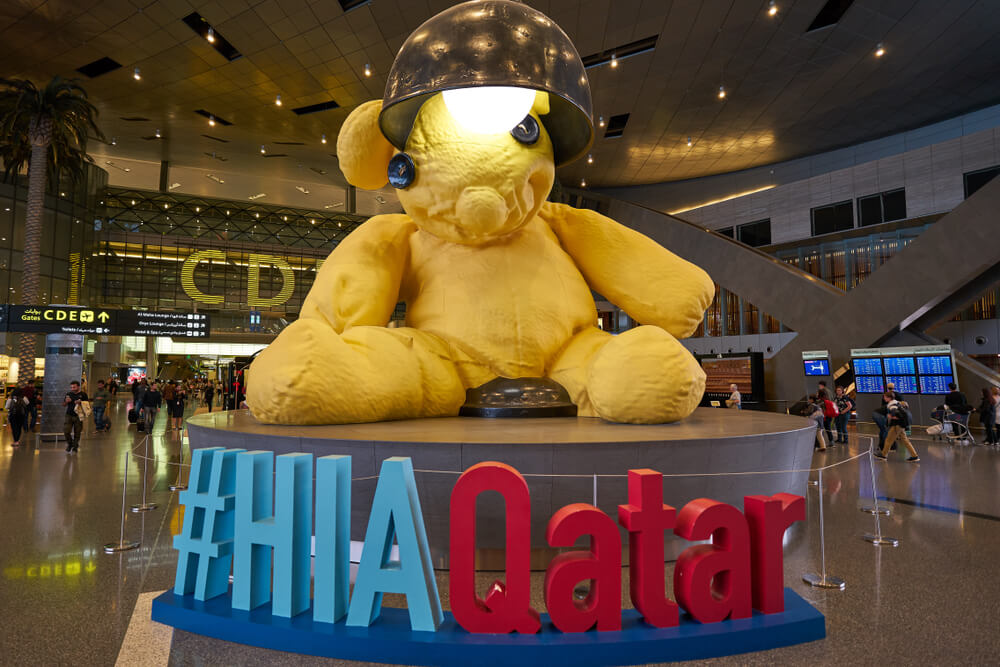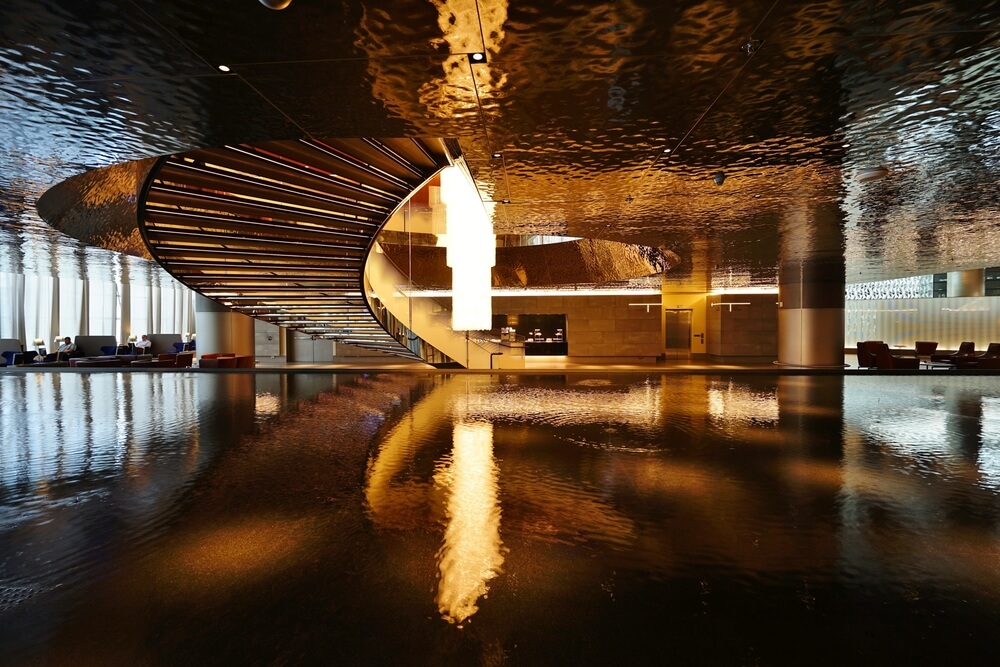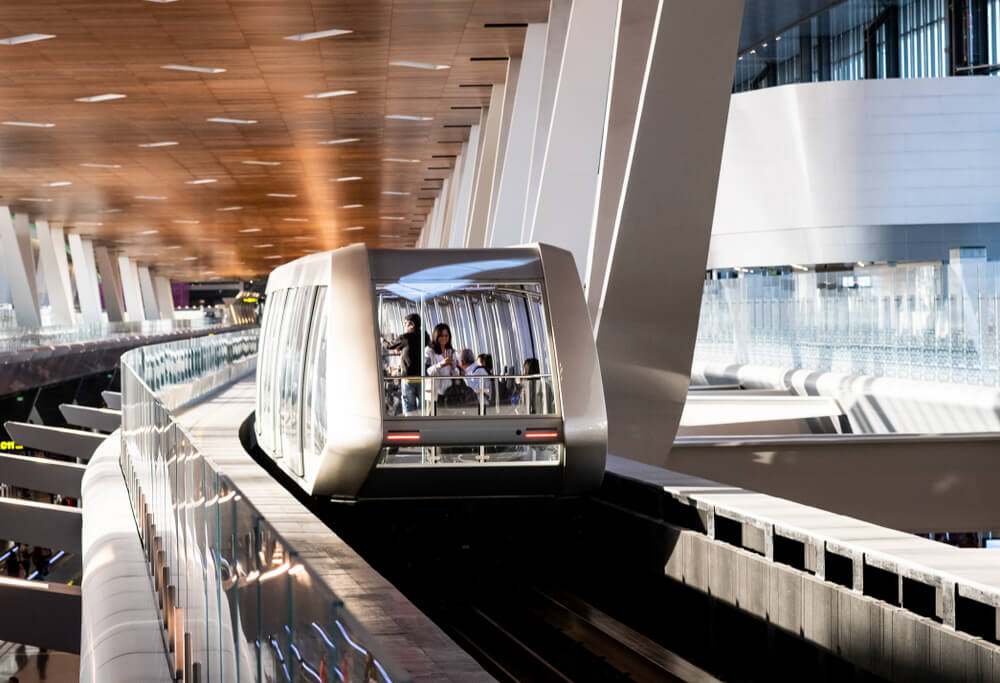The Persian Gulf is a recognizable presence in the aviation market. Synonymous with luxury, the region, which attracts millions of air travelers from across the globe each year, is home to several premium airlines. The region’s airports also boast the latest technology, which adds to its lavish reputation.
Subsequently, many of the Gulf’s deluxe airports have significantly raised the bar when it comes to customer service. Some of the region’s highest rated airports are second to none when it comes to the quality of customer service. But others entice travelers with a far more distinctive experience and extensive, sometimes unique, services.
Here, AeroTime investigates how the Gulf’s top-rated airports entice millions of visitors each year.
Dubai International Airport (DXB) ‒ where eyes become passports
Dubai International Airport (DXB), which is 60 years old, is considered one of the world’s busiest airports and a key cargo hub for the Middle East.
DXB opened on September 30, 1960, in the city of Dubai, the capital of the Emirate of Dubai. Since then, the airport has experienced exponential growth and passenger traffic has increased.
Daniela Collins / Shutterstock
Since Dubai is a preferred business hub, which attracts some of the world’s top professionals, as well as an immensely popular holiday destination, DXB continues to serve record numbers of passengers despite travel restrictions caused by the global pandemic.
According to the latest DXB data, despite the industry being restrained when air travel was paused and passenger numbers reduced by approximately 70%, the airport still served 25.9 million passengers in 2020. Pre-pandemic figures were even more impressive. In 2014, the airport served a record number of passengers and more than 70 million travelers passed through the building’s three terminals.
Eugene Lu / Shutterstock
So, what makes DXB unique?
Firstly, the proof may be in its size and capacity. The airport, which initially had a small single terminal building and a sandy runway capable of serving small 32-seat jets, is now able to handle various types of aircraft, including the international traveler’s beloved Airbus A380 superjumbo jet. DXB now spans approximately 29 square kilometers, which is roughly the size of 98 football fields.
DXB comprises five runways and three terminals, which are divided to serve different air carriers. For instance, Terminal 1 serves all arriving and departing airlines, while Terminal 2 is dedicated to scheduled charter and special flights.
One of the most famous parts of the airport is Terminal 3, which, when it was built in 2008, was the biggest building in the world by floor space, occupied an area of more than 1.7 square kilometers and is capable of handling 43 million passengers per year. However, the record was beaten by the New Century Global Center in 2013. Terminal 3 is now the world’s second-largest building by floor space.
DXB airport has gone to great lengths to implement and develop advanced technologies. In 2017, the airport began to offer the world’s fastest Wi-Fi connection, the rather aptly named ‘WoW-fi’.
Currently, the airport is considered a leader when it comes to implementing artificial intelligence (AI). To satisfy travelers, as well as to reduce the time needed to complete formal airport procedures before departure and after arrival, DXB has almost eliminated the need for staff interaction during the passenger identification process.
For example, Terminal 3 installed Smart Gates, where new AI technology allowed UAE residents to skip long queues at passport control on arrival, which not only saved time but streamlined the process. The advanced technology, which asks passengers to look at a green light installed at the gate and negates the need to scan a personal document, allowed passengers to pass through passport control within a few seconds.
Markus Mainka / Shutterstock.com
The procedure was further developed and, in early 2021, DXB adjusted an improved biometric technology that mixed facial and iris recognition. As a result, travelers are now allowed to not only skip the line at passport control on arrival, but are also able to check-in for their flight, enter lounges, board flights and even complete immigration formalities. Now, these Biometric path touchpoints scan the faces of passengers and verify their identity, which creates a more hygienic and sleek process.
In addition to various technological developments applied in the airport, DXB is also popular for a variety of top-rated restaurants and amenities such as a gym, an indoor pool and massage facilities. The surrounding duty-free stores, artificial palm trees, gleaming terminals, water cascades and near-Arctic levels of air conditioning also add to the feeling that DXB is a thoroughly modern airport.
But a specific part of the airport can be deemed the most luxurious. For those who travel via private jet, DXB offers an eye-catching VIP terminal, which spans approximately 5,574 square meters, and is dedicated to serving only the wealthiest clientele. Currently, it is considered to be the largest VIP terminal in the world and is divided into three FBOs [fixed-base operators, ed.-], each operated by a different private jet charter airline.
Sorbis / Shutterstock
After alighting their private jet, passengers are quickly transferred to the terminal via a chauffeur-driven Bentley or Rolls Royce. The terminal, where live piano music (or the customer’s preferred musical choice) is performed, consists of an uncrowded passport desk and spacious resting rooms where $4.5 million Bugattis are displayed in the center. Passengers are offered a cappuccino, made using a $1,000 coffee machine, and served in a personalized cup, which features their own face. These are just a few examples of what DXB offers its more monied clients.
saiko3p/ / Shutterstock
Muscat International Airport (MCT) – a unique hotel inside the terminal
Muscat International Airport (MCT), based in Oman, is the largest and busiest airport in the country. Locals proudly view the airport as a symbol of growth, development and national pride. MCT is also one of the most luxurious airports in the Gulf.
While the airport serves fewer travelers than DXB airport, MCT offers a similar opulent experience. Initially, the airport was built to serve a single terminal. However, in 2018, MCT was expanded and a second terminal was opened to serve international flights.
In March 2021, the Airports Council International, the global trade representative of the world’s airport authorities, awarded MCT airport as the Fastest Growing Airport in the Middle East region based on passenger satisfaction. MCT offers a full range of duty-free shops and restaurants. But there’s something about the airports that sets it apart from its competitors.
z-l e x / Shutterstock
Before COVID-19, MCT served as many as 20 million passengers per year. So, the airport established the first-ever integrated transit hotel, where tired passengers can reserve a room by the hour for a short nap, or can book an overnight stay if needed. The unique hotel offers customers the same facilities as a regular hotel and even includes an indoor swimming pool, a separate restaurant and a fitness suite. Ideal for those in-transit or perhaps want to get some shut eye before or after a flight.
Chris worldwide / Shutterstock
MCT is also famous for its exclusive Business and First Class lounges with 24-hour hospitalibily services. While passing through the airport, passengers are offered the opportunity to take a nap in designated restrooms in the luxurious Primeclass lounge. This is particularly useful for travelers who might have a long break between connecting flights but prefer not to take advantage of the transit hotel. In addition to simple services, including children’s playrooms and family/meeting rooms, MCT’s Primeclass lounge has a private cinema room and a spa.
Abu Dhabi International Airport (AUH) – offering the royal treatment
At 34.3 square kilometers, Abu Dhabi International Airport (AUH) can be considered yet another one of the Gulf’s extravagant airports.
The second-largest airport, after DXB airport in the UAE, was established in 1982. The building has continued to expand and currently operates three terminals, featuring bi-level arrival and departure areas.
The airport is most notable for its seven different lounges, which provide varying levels of passenger service. Travelers in-transit have the opportunity to rest in sleeping pods, which fold flat, or embark on some retail therapy in a luxury store. The store, which spans 253 square meters, displays a range of fragrances from all around the world, many exclusive to the Middle East. However, these amenities pale in comparison to those offered to VIP and first class passengers.
Mikhail Gnatkovskiy / Shutterstock
The Etihad First Class Lounge equals a 5-star hotel in terms of hospitality. Passengers can try a range of complimentary deluxe spa treatments, including massages and facials, alongside a fully equipped private gym. There is also a dedicated prayer room.
Meanwhile, passengers at AUH’s VIP terminal are offered sterling service. The VIP terminal boasts separate access, including parking and drop-off areas, as well as private check-in and immigration facilities, and exclusive limousine transfers between the terminal and the aircraft.
Passengers who opt for the VIP treatment are also permitted access to the Royal Majlis lounge, which is famous for the highest level of comfort and luxury services provided in both Arabic and European hospitality. For example, while a passenger takes a few moments to enjoy delicious food, refreshments and various entertainment, a specially dedicated service agent completes all the necessary airport formalities and paperwork, including the laborious task of checking luggage.
Hamad International Airport (HIA) ‒ where technology meets art
In a list of the most luxurious airports in the Gulf, there should be a dedicated spot for Hamad International Airport (HIA) in Qatar.
When the COVID-19 pandemic hit the aviation industry in early 2020, HIA became the first airport in the Gulf region and Asia to receive a 5-Star COVID-19 Airport Safety Rating issued by the United Kingdom-based airport review and ranking company Skytrax. Hamad International Airport also became the first to achieve independent certification from the British Standards Institution for implementation of COVID-19 Aviation Health Safety Protocols.
The airport, which spans 22 square kilometers and includes three separate terminals, is widely-known for its innovative approach to implementing customer-empowering technologies. When the pandemic struck, HIA became one of the first airports in the world to apply stringent health and safety measures.
GregD / Shutterstock
To optimize operations, HIA purchased the latest technologies and introduced advanced technological solutions, which helped to reduce the risk of spreading infectious diseases. This included fully autonomous disinfectant robots, thermal-smart screening helmets and even ultraviolet baggage disinfection tunnels. HIA also applied contact-free services, allowing passengers to move through key touchpoints with minimal physical contact.
The airport, which was opened to the public in 2014, also attracts the attention of millions of local and international passengers by offering exceptional luxurious solutions. The ultramodern facility was built on land reclaimed from the sea and its architecture reflects the coastal location, featuring a rooftop rippling away from the concourse in swooping peaks and troughs. An adjacent mosque resembles a giant blue droplet of water.
EQRoy / Shutterstock
HIA, which used to serve more than 30 million travelers a year before the pandemic struck, is also famous for its museum-quality art program. All passengers are invited to visit 10 free and constantly changing galleries, featuring the latest works by world-famous artists, which are spread throughout the building.
Much like its competitors, HIA also offers several luxurious amenities, including upscale boutiques, an airport gym with a 25-meter swimming pool, a 100-room hotel, a high-class restaurant, swanky business class lounges and a special lounge for unaccompanied minors, featuring play areas for children. Passengers are also given the opportunity to rest by visiting the private cinema, hydrotherapy pool or even the squash courts.
Kapi Ng / Shutterstock
Airlines are more likely to want to operate out of larger airports and, subsequently, a greater number of destinations are served. This results in a high volume of passengers passing through the building. So, it comes as no surprise that airports in the Gulf region are continuing to offer exclusive services to passengers.

